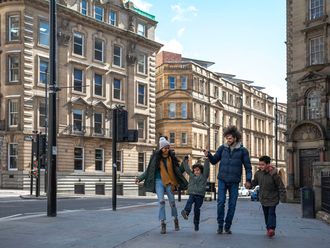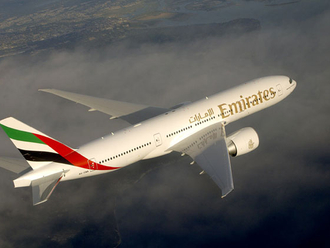
A holiday to Spain generally conjures up images of lazy days of relaxing on the beach, a summer cruise vacation or sipping sangrias while soaking up the sun.
So what about winter? Spain is far from quiet during these months and offers an equally fantastic holiday experience with its festive atmosphere, Christmas markets, shopping experiences, winter activities and you may not believe it, even good weather!
Pleasant winters
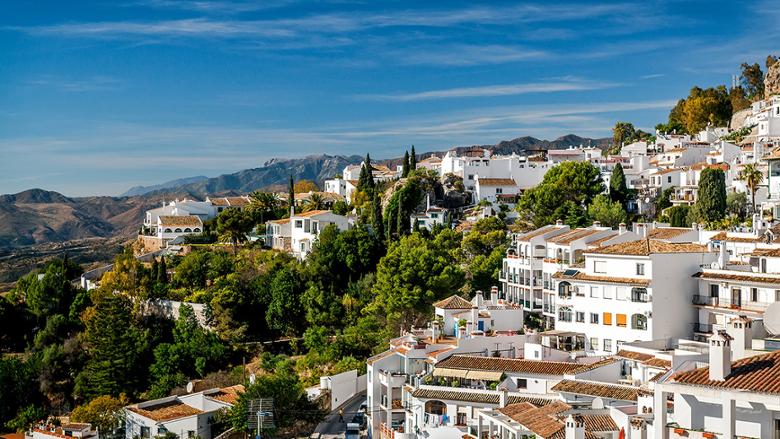
While the centre and north of Spain does get cold in winter, it is still more pleasant than many other winter destinations – e.g. Madrid in December usually reaches a high of around 10 degrees, rarely falling below freezing at night. And in Barcelona, temperatures range from somewhere from 5-14 degrees during winter.
This translates to lively cities with an active social calendar, cultural agendas from flamenco performances to concerts, buzzing nightlife and plenty of options to dine and shop in.
And, for those who want to experience the magic of a European Christmas and avoid freezing temperatures, Andalusia or the Canary Islands are the perfect choice with their mild winters and a festive atmosphere.
Christmas in Spain
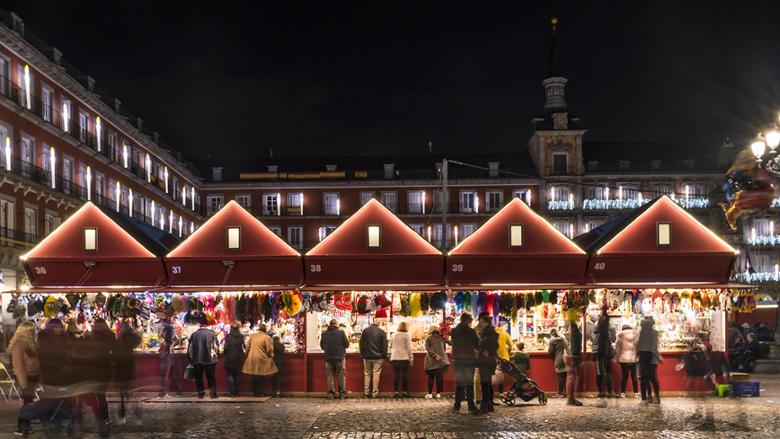
December till early January is a beautiful time to check out Spain´s Christmas markets, splendid nativity scenes, special traditions and lots of great food.
Festive lighting – Starting from late November till the first week of January, Spanish cities are decked in a burst of colour and light. From the sparkling lights along the Gran Via and Christmas decorations adorning the streets in Madrid to the brightly decorated boulevards and plazas in Seville, Spain’s illuminations are sure to dazzle!
Christmas markets – Giant, cone-shaped light trees that stretch to the stars, the sweet smell of caramelizing almonds and beautifully elaborate nativity scenes. This can only be one place: a Spanish Christmas market.
While nearly every city in Spain hosts some type of Christmas market, the ones in Madrid’s Plaza Mayor, Seville’s Plaza Nueva, Barcelona’s Fira de Santa Lucia, and Málaga Park stand out.
Unique traditions – Spain´s Christmas celebrations continue well past New Year’s. Three Kings Day, or Dia De Los Reyes Magos, which falls on January 6 every year is the most significant one. Spanish children eagerly await this day for the Christmas presents they receive. Festivities for this special day start a day early on January 5th where Spanish families line the streets to enjoy the Cabalgata de los Reyes Magos parade. While dancers and musicians entertain the public, the kings ride in on horses or elaborate floats and throw goodies down to the children.
And while you are here in Spain, why not try your luck at the Spanish Christmas Lottery, one of the richest lotteries in the world, that takes place on December 22 every year?
Christmas sweets: Sweets have their own special place during Christmas from a variety of nougats (the Spanish turron is made with nuts and is most popular), marzipans and crumbly cakes or cookies called polvorones. The ring-cake of the three kings is the symbolic food for the Three Kings Day (January 6) and resembles a king’s crown decked with jewels. Buried inside is usually a toy figurine of baby Jesus and it is believed that the person who finds it enjoys good luck for the year ahead!
New Year’s Eve in Spain
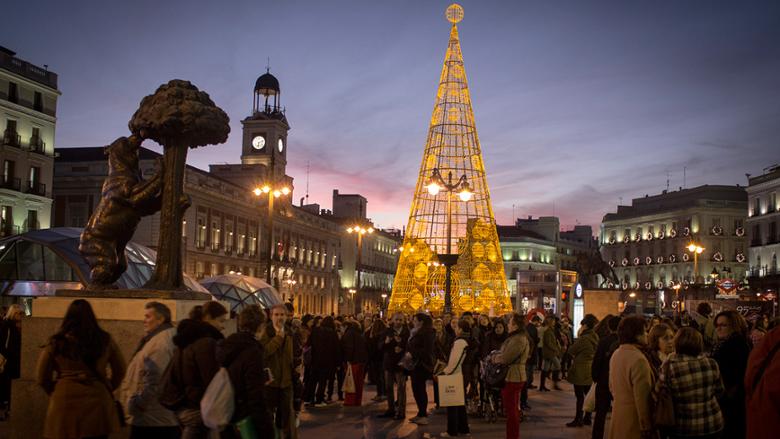
Known as Noche Vieja in Spanish, New Year’s Eve is celebrated in Spanish style and time! Here, the lead-up to midnight is on a rather sober note and is spent with family while the real party starts after midnight and goes on to 6am!
In Madrid, Puerta del Sol is the place to be – nearing midnight, the plaza fills up with festive Spaniards ready to celebrate the new year with good cheer.
And as the church bells start ringing in the new year, it is a common tradition to eat 12 grapes with every chime, to ensure good luck 12 months of the coming year!
Shoppers’ delight
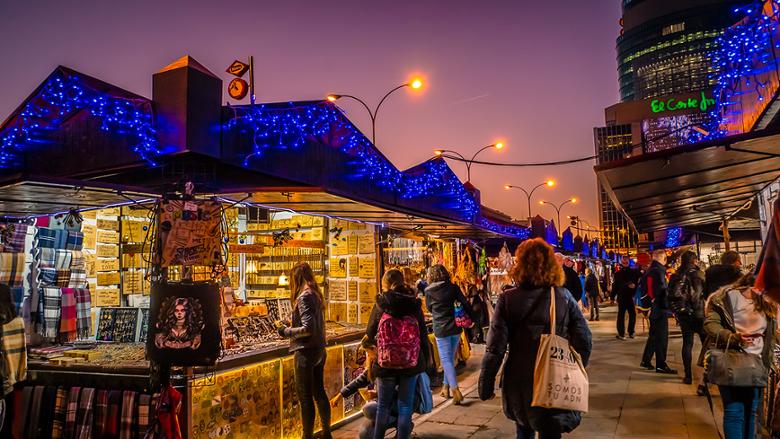
Unlike many European destinations where businesses close early in winter, in Spain, shops are open till well past 8pm. And in cities like Madrid, certain stores open their doors seven days a week.
Except for December 25, January 1 and 6, outlet villages like Las Rozas (near Madrid) and La Roca (near Barcelona) stay open till 10pm.
The Shopping Night Barcelona has firmly established itself as an essential night out in the lead-up to Christmas, with shops, restaurants and bars along the iconic Passeig de Gràcia and several of the surrounding streets opening late into the night.
In the lead-up to Christmas, indulge in some pre-festive shopping at the Black Friday sales held in the last week of November. There aren’t usually many sales during Christmas, but shopping during this time is an experience in itself. Marvel at the beautiful window displays of departmental chains like El Corte Ingles, shop for Christmas trinkets and nativity scenes at the local Christmas markets, or pick up gifts for the little ones for Three Kings Day. The winter sales normally begin on January 7, although certain cities like Madrid bring them forward to as early as January 1.
Winter is truly a great time for some retail therapy in Spain.
Let it snow – winter activities
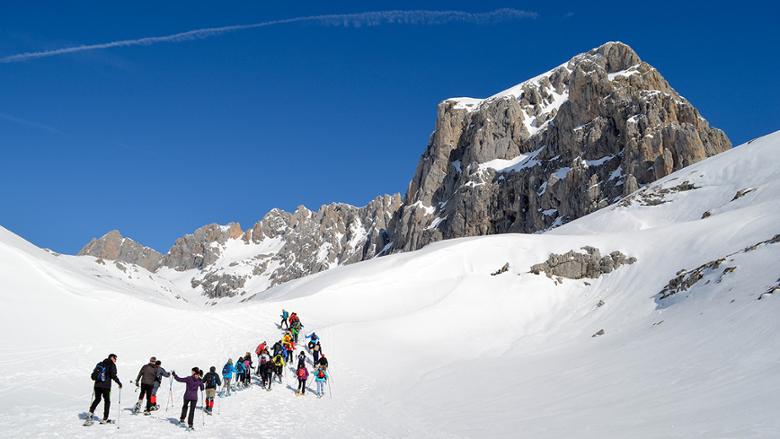
Not many know that Spain is the second-most mountainous region in Europe and one can enjoy superb winter activities from skiing to snowboarding just a few hours from the main cities.
If skiing is your priority, Baqueira-Beret, perched high up in the Catalan Pyrenees near Barcelona, is Spain’s largest and most famous winter resort.
Situated 21km southeast of Granada, Sierra Nevada is Europe’s southernmost ski resort and prides itself with bright sunny days, a lively après-ski scene, and around 2,500 hectares of skiable terrain. In which other city can you go from mountain to beach on the same day?
Choose from 36 mountain resorts and over 1,000km of ski runs, including notable ones like Benasque (Pyrenees), La Molina (Pyrenees), Formigal (Pyrenees).
Carnival!
Winter also brings the carnival season to Spain. Starting late February, many cities and villages around the country celebrate with elaborate and dazzling street parades, music, theatre and some quirky traditions!
Although each region celebrates with colour and abandon, the most impressive festivities can be observed in the Canary Islands and Cadiz (Andalusia), an hour and half drive from Marbella.


